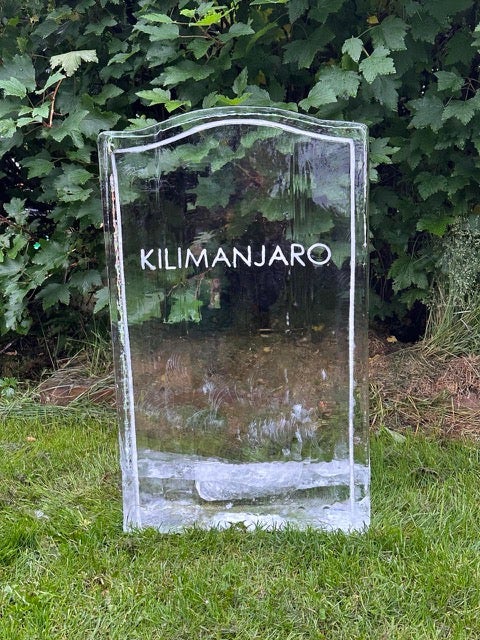Five years after the world’s first glacier funeral for Iceland’s first glacier lost to climate change, the Rice University researchers behind the project are launching the Global Glacier Casualty List (GGCL), the first platform for tracking disappeared and critically endangered glaciers around the world, as well as documenting their stories. The Casualty List will debut with the world’s first Glacier Graveyard Aug. 17 in Reykjavík, Iceland.
The events are taking place in the lead-up to 2025, which the United Nations has designated as the International Year of Glaciers’ Preservation. Researchers Cymene Howe and Dominic Boyer, both professors of anthropology at Rice, are working closely with climate scientists, glaciologists, the United Nations Educational, Scientific and Cultural Organization (UNESCO) and public leaders around the world to compile the GGCL.
“The Okjökull memorial inspired a number of glaciologists around the world to take stock of how many glaciers had already disappeared in their countries,” Howe said of the 2019 event she and Boyer organized. “A 2023 study calculated that 264 glaciers had melted away in New Zealand alone. In China, more than 8,300 glaciers have disappeared in the past several decades. With the Global Glacier Casualty List, we will feature 15 recently lost and critically endangered glaciers around the world, and we will work with scientists and communities to add to the list each year as glaciers continue to expire.”
“The scale of our new initiative is meant to match the scale of the problem itself,” Boyer said. “Tens of thousands of glaciers have already been lost to climate change around the world, and until now, we didn’t have a platform to track those losses and tell the stories of glaciers which have disappeared and how their losses have impacted local communities.”
The GGCL will be unveiled at 1 p.m. local time in Reykjavík Aug. 17 and will feature an interactive website tracking extinct and endangered glaciers. The platform includes stories about the dead glaciers written by individuals from the glaciers’ respective countries.
“This is just the beginning,” Boyer said. “We are launching the casualty list with 15 glacier stories, and we are inviting scientists, community members, governments and other organizations to collaborate with us to tell the stories of lost glaciers across the world. The platform will help the broader public to learn more about the impacts of human-caused climate change upon the world’s glaciers and the communities that depend on them.”
The platform launch will be followed by an hourlong, memorial procession to the site of the world’s first Glacier Graveyard on the Seltjarnarnes peninsula near Reykjavík. The graveyard will consist of 15 headstones carved from ice by Icelandic ice sculptor Ottó Magnússon. The 3-foot-high headstones will be placed in a green field next to the sea and will bear the names of glaciers from around the world that have been lost to global warming. A ceremony in honor of their passing and toward climate action will also take place.
“Like their glacial counterparts, these monuments will also melt away, but the ceremony and icy headstones will serve as poignant reminders that the world’s glaciers are doomed to the same fate without quick action,” Howe said.
“Rituals for the dead have always been a part of human societies. Now we are at a point where human impacts on the planetary system demand that we show our concern for our dying glaciers. Glaciers are incredibly important sources of cultural heritage in addition to being home to three-quarters of the world’s fresh water. Like our memorial for Okjökull five years ago, this is a call to action and a way for people to feel the impacts of climate change on an emotional level.”
The Glacier Graveyard ceremony will take place next to the lighthouse on the peninsula and will be attended by diplomats from the embassies of countries with recently lost glaciers as well as youth climate activists, political figures, scientists, artists and the general public.
Both events are co-sponsored by Rice, the University of Iceland, the Icelandic Glaciological Society, the World Glacier Monitoring Service, the Icelandic Museum of Natural History and UNESCO, which is working to raise awareness of the importance of glaciers to world heritage.
The following day, Aug. 18, climate youth activists, political figures, scientists and other members of the public will hike to the monument recognizing the site of the former Okjökull glacier in Borgarfjörður, Iceland. If you are interested in attending the hike to the Okjökull memorial, please use the contact form here.
In 2018, Howe and Boyer premiered “Not Ok,” a documentary about Okjökull, which in 2014 became Iceland’s first named glacier to lose its “glacier” title. Scientists fear all of the island nation’s glaciers will be gone by 2200.
Melting glaciers have far-reaching implications for ecosystems, economies and societies worldwide. As glaciers melt, they contribute to the rise in global sea levels. This poses a threat to coastal communities, low-lying areas and island nations, leading to increased risk of flooding, erosion and loss of habitats. In addition, the loss of glaciers impacts water resources and contributes to further global warming.
Media interested in attending any of the events or interviewing Howe or Boyer may contact Amy McCaig, senior media relations specialist at Rice, at 713-348-6777 or amym@rice.edu.
Additional information on the project will be available at https://www.instagram.com/glaciersarelife.

